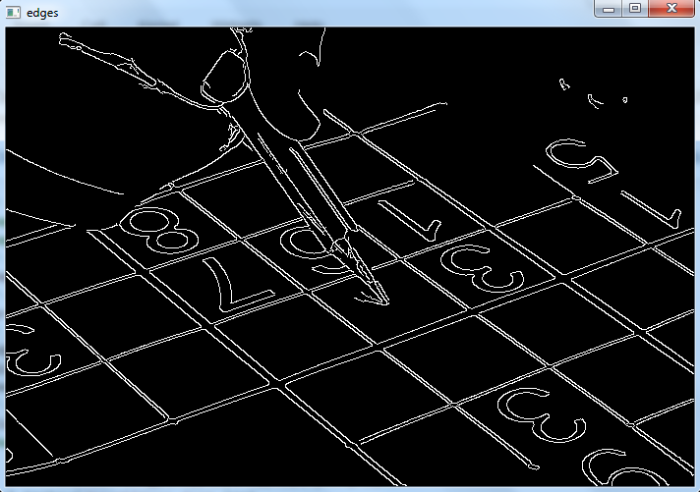
 Data Structure
Data Structure Networking
Networking RDBMS
RDBMS Operating System
Operating System Java
Java MS Excel
MS Excel iOS
iOS HTML
HTML CSS
CSS Android
Android Python
Python C Programming
C Programming C++
C++ C#
C# MongoDB
MongoDB MySQL
MySQL Javascript
Javascript PHP
PHP
- Selected Reading
- UPSC IAS Exams Notes
- Developer's Best Practices
- Questions and Answers
- Effective Resume Writing
- HR Interview Questions
- Computer Glossary
- Who is Who
How to implement probabilistic Hough Transform in OpenCV Python?
Probabilistic Hough Transform is an optimization of the Hough Transform. The hough transform takes a lot of computation even for a line with two arguments. Probabilistic Hough Transform doesn't take all the points into consideration, it takes only a random subset of points and that is sufficient for line detection. We could follow the below given steps to implement probabilistic Hough Transform on an image-
Import the required library. In all the following examples, the required Python library is OpenCV. Make sure you have already installed it.
Read an input image using cv2.imread(). The RGB image read using this method is in BGR format. Optionally assign the read BGR image to img.
Now convert this BGR image to grayscale image as below using cv2.cvtColor() function. Optionally assign the converted grayscale image to gray.
Apply thresholding on the grayscale image to convert it to a binary image. Adjust the second parameter (threshValue) for better binary image.
Find the edges in the binary image using Canny edge detector (you can use any other edge detector to detect edges).
edges = cv2.Canny(gray,50,200,apertureSize = 3)
Apply probabilistic Hough transform on the edge image using cv2.HoughLinesP(). It returns the coordinates of detected lines.
lines = cv2.HoughLinesP(edges, 1, np.pi/180, 50, minLineLength, maxLineGap)
Draw lines on the image and display the output image.
Let's have a look at some examples for more clear understanding.
Input Image
We will use this image as an input file in the examples below.

Example
In this example, we find the probabilistic Hough Line transform on the image with the following line properties ?
minLineLength = 10
maxLineGap = 5
# import required libraries import cv2 import numpy as np # read the input image img = cv2.imread('sudoku.jpg') # convert the input image to grayscale image gray = cv2.cvtColor(img,cv2.COLOR_BGR2GRAY) # find the edges using Canny edge detector edges = cv2.Canny(gray,50,200,apertureSize = 3) minLineLength = 10 maxLineGap = 5 # apply probabilistic Hough transform lines = cv2.HoughLinesP(edges,1,np.pi/180,50,minLineLength,maxLineGap) for line in lines: for x1,y1,x2,y2 in line: cv2.line(img,(x1,y1),(x2,y2),(0,255,0),2) cv2.imshow('houghlines.jpg',img) cv2.imshow('edges', edges) cv2.waitKey(0) cv2.destroyAllWindows()
Output
When you run the above program, it will produce the following windows ?


The first window "Edges" shows the edges detected using Canny edge detection algorithm. The second window "houghlines.jpg" shows the detected lines using probabilistic Hough Line transform.

